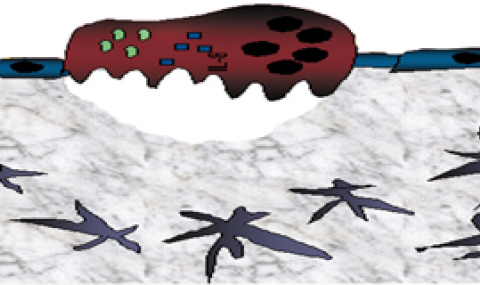Innate immune neutrophils provide the first line of host defense against bacterial infections, which requires their rapid recruitment from the bone marrow (BM) to the circulation. The metabolite lactate has long been considered a “waste byproduct” of cell metabolism that accumulates during stress induced inflammation and sepsis. Increased lactate levels in human patients coincide with the presence of neutrophils in the circulation and inflamed tissues, and are used as a marker for sepsis diagnosis. However, the direct effector actions of lactate during acute inflammation and particularly in regulating neutrophil mobilization and function during the onset of inflammation has remained obscure. Utilizing murine bacterial infection models, we report in this study that neutrophil-derived lactate promotes their rapid mobilization from the bone marrow (BM) into the circulation. Bacterial lipopolysaccharides (LPS) or Salmonella Typhimurium treatment in vivo increase NADPH oxidase-mediated reactive oxygen species and HIF-1α levels in BM neutrophils, triggering lactate production and release from these cells via its transporter MCT4. Elucidating the molecular basis of lactate production and function, we found that LPS treatment did not increase metabolic cascades and lactate production in mice deficient in NADPH oxidase (NOX) or in myeloid-specific HIF-1α. Direct evidence by exogenous lactate administration increased the defective LPS-induced activated neutrophil mobilization in NOX mutated mice. These results further demonstrate the essential role of lactate in optimal neutrophil mobilization during onset of acute inflammation. Adding mechanistic insights to our observations, we further identified that sinusoidal BM endothelial cells (sBMECs) functionally express the G-protein coupled lactate-receptor GPR81. We show that in response to LPS, lactate-released from BM neutrophils activates GPR81 signaling that in turn downregulates Epac1 and reduces VE-cadherin expression in sBMECs, thereby increasing BM vascular permeability and enhancing neutrophil mobilization to the circulation. Our study highlights neutrophil-released lactate as a key pro-inflammatory stimulus in the onset of inflammation that rapidly and locally opens the BM vascular barrier to facilitate neutrophil mobilization and recruitment to sites of inflammation. Targeting this immune-metabolic crosstalk between lactate-producing neutrophils and the BM endothelium could potentially control pathological neutrophil activities during bacterial infections and potentially help rescue immune disorders, thus having a clinical relevance.

Dynamic Networking between Stem Cells & Bone Marrow Microenvironment


